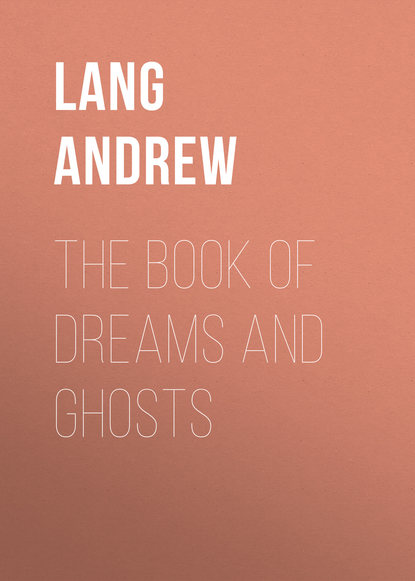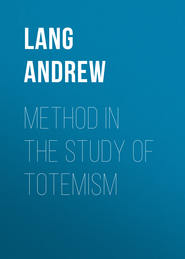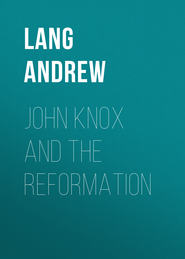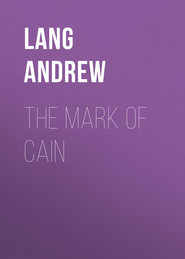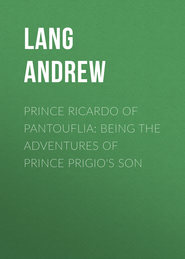По всем вопросам обращайтесь на: info@litportal.ru
(©) 2003-2024.
✖
The Book of Dreams and Ghosts
Настройки чтения
Размер шрифта
Высота строк
Поля
Most of us know this feeling, all the circumstances in which we find ourselves have already occurred, we have a prophecy of what will happen next “on the tip of our tongues” (like a half-remembered name), and then the impression vanishes. Scott complains of suffering through a whole dinner-party from this sensation, but he had written “copy” for fifty printed pages on that day, and his brain was breaking down. Of course psychology has explanations. The scene may have really occurred before, or may be the result of a malady of perception, or one hemisphere of the brain not working in absolute simultaneousness with the other may produce a double impression, the first being followed by the second, so that we really have had two successive impressions, of which one seems much more remote in time than it really was. Or we may have dreamed something like the scene and forgotten the dream, or we may actually, in some not understood manner, have had a “prevision” of what is now actual, as when Shelley almost fainted on coming to a place near Oxford which he had beheld in a dream.
Of course, if this “prevision” could be verified in detail, we should come very near to dreams of the future fulfilled. Such a thing – verification of a detail – led to the conversion of William Hone, the free-thinker and Radical of the early century, who consequently became a Christian and a pessimistic, clear-sighted Tory. This tale of the déjà vu, therefore, leads up to the marvellous narratives of dreams simultaneous with, or prophetic of, events not capable of being guessed or inferred, or of events lost in the historical past, but, later, recovered from documents.
Of Hone’s affair there are two versions. Both may be given, as they are short. If they illustrate the déjà vu, they also illustrate the fond discrepancies of all such narratives. [15 - From Some Account of the Conversion of the late William Hone, supplied by some friend of W. H. to compiler. Name not given.]
THE KNOT IN THE SHUTTER
“It is said that a dream produced a powerful effect on Hone’s mind. He dreamt that he was introduced into a room where he was an entire stranger, and saw himself seated at a table, and on going towards the window his attention was somehow or other attracted to the window-shutter, and particularly to a knot in the wood, which was of singular appearance; and on waking the whole scene, and especially the knot in the shutter, left a most vivid impression on his mind. Some time afterwards, on going, I think, into the country, he was at some house shown into a chamber where he had never been before, and which instantly struck him as being the identical chamber of his dream. He turned directly to the window, where the same knot in the shutter caught his eye. This incident, to his investigating spirit, induced a train of reflection which overthrew his cherished theories of materialism, and resulted in conviction that there were spiritual agencies as susceptible of proof as any facts of physical science; and this appears to have been one of the links in that mysterious chain of events by which, according to the inscrutable purposes of the Divine will, man is sometimes compelled to bow to an unseen and divine power, and ultimately to believe and live.”
“Another of the Christian friends from whom, in his later years, William Hone received so much kindness, has also furnished recollections of him.
“.. Two or three anecdotes which he related are all I can contribute towards a piece of mental history which, if preserved, would have been highly interesting. The first in point of time as to his taste of mind, was a circumstance which shook his confidence in materialism, though it did not lead to his conversion. It was one of those mental phenomena which he saw to be inexplicable by the doctrines he then held.
“It was as follows: He was called in the course of business into a part of London quite new to him, and as he walked along the street he noticed to himself that he had never been there; but on being shown into a room in a house where he had to wait some time, he immediately fancied that it was all familiar, that he had seen it before, ‘and if so,’ said he to himself, ‘there is a very peculiar knot in this shutter’. He opened the shutter and found the knot. ‘Now then,’ thought he, ‘here is something I cannot explain on my principles!’”
Indeed the occurrence is not very explicable on any principles, as a detail not visible without search was sought and verified, and that by a habitual mocker at anything out of the common way. For example, Hone published a comic explanation, correct or not, of the famous Stockwell mystery.
Supposing Hone’s story to be true, it naturally conducts us to yet more unfamiliar, and therefore less credible dreams, in which the unknown past, present, or future is correctly revealed.
CHAPTER II
Veracious Dreams. Past, Present and Future unknown Events “revealed”. Theory of “Mental Telegraphy” or “Telepathy” fails to meet Dreams of the unknowable Future. Dreams of unrecorded Past, how alone they can be corroborated. Queen Mary’s Jewels. Story from Brierre de Boismont. Mr. Williams’s Dream before Mr. Perceval’s Murder. Discrepancies of Evidence. Curious Story of Bude Kirk. Mr. Williams’s Version. Dream of a Rattlesnake. Discrepancies. Dream of the Red Lamp. “Illusions Hypnagogiques.” The Scar in the Moustache. Dream of the Future. The Coral Sprigs. Anglo-Saxon Indifference. A Celtic Dream. The Satin Slippers. Waking Dreams. The Dead Shopman. Dreams in Swoons.
Perhaps nothing, not even a ghost, is so staggering to the powers of belief as a well-authenticated dream which strikes the bull’s eye of facts not known to the dreamer nor capable of being guessed by him. If the events beheld in the dream are far away in space, or are remote in time past, the puzzle is difficult enough. But if the events are still in the future, perhaps no kind of explanation except a mere “fluke” can even be suggested. Say that I dream of an event occurring at a distance, and that I record or act on my dream before it is corroborated. Suppose, too, that the event is not one which could be guessed, like the death of an invalid or the result of a race or of an election. This would be odd enough, but the facts of which I dreamed must have been present in the minds of living people. Now, if there is such a thing as “mental telegraphy” or “telepathy,” [16 - What is now called “mental telegraphy” or “telepathy” is quite an old idea. Bacon calls it “sympathy” between two distant minds, sympathy so strong that one communicates with the other without using the recognised channels of the senses. Izaak Walton explains in the same way Dr. Donne’s vision, in Paris, of his wife and dead child. “If two lutes are strung to an exact harmony, and one is struck, the other sounds,” argues Walton. Two minds may be as harmoniously attuned and communicate each with each. Of course, in the case of the lutes there are actual vibrations, physical facts. But we know nothing of vibrations in the brain which can traverse space to another brain.Many experiments have been made in consciously transferring thoughts or emotions from one mind to another. These are very liable to be vitiated by bad observation, collusion and other causes. Meanwhile, intercommunication between mind and mind without the aid of the recognised senses – a supposed process of “telepathy” – is a current explanation of the dreams in which knowledge is obtained that exists in the mind of another person, and of the delusion by virtue of which one person sees another who is perhaps dying, or in some other crisis, at a distance. The idea is popular. A poor Highland woman wrote to her son in Glasgow: “Don’t be thinking too much of us, or I shall be seeing you some evening in the byre”. This is a simple expression of the hypothesis of “telepathy” or “mental telegraphy”.] my mind, in dream, may have “tapped” the minds of the people who knew the facts. We may not believe in “mental telegraphy,” but we can imagine it as one of the unknown possibilities of nature. Again, if I dream of an unchronicled event in the past, and if a letter of some historical person is later discovered which confirms the accuracy of my dream, we can at least conceive (though we need not believe) that the intelligence was telegraphed to my dreaming mind from the mind of a dead actor in, or witness of the historical scene, for the facts are unknown to living man. But even these wild guesses cannot cover a dream which correctly reveals events of the future; events necessarily not known to any finite mind of the living or of the dead, and too full of detail for an explanation by aid of chance coincidence.
In face of these difficulties mankind has gone on believing in dreams of all three classes: dreams revealing the unknown present, the unknown past, and the unknown future. The judicious reasonably set them all aside as the results of fortuitous coincidence, or revived recollection, or of the illusions of a false memory, or of imposture, conscious or unconscious. However, the stories continue to be told, and our business is with the stories.
Taking, first, dreams of the unknown past, we find a large modern collection of these attributed to a lady named “Miss A-”. They were waking dreams representing obscure incidents of the past, and were later corroborated by records in books, newspapers and manuscripts. But as these books and papers existed, and were known to exist, before the occurrence of the visions, it is obvious that the matter of the visions may have been derived from the books and so forth, or at least, a sceptic will vastly prefer this explanation. What we need is a dream or vision of the unknown past, corroborated by a document not known to exist at the time when the vision took place and was recorded. Probably there is no such instance, but the following tale, picturesque in itself, has a kind of shadow of the only satisfactory sort of corroboration.
The author responsible for this yarn is Dr. Gregory, F.R.S., Professor of Chemistry in the University of Edinburgh. After studying for many years the real or alleged phenomena of what has been called mesmerism, or electro-biology, or hypnotism, Dr. Gregory published in 1851 his Letters to a Candid Inquirer on Animal Magnetism.
Though a F.R.S. and a Professor of Chemistry, the Doctor had no more idea of what constitutes evidence than a baby. He actually mixed up the Tyrone with the Lyttelton ghost story! His legend of Queen Mary’s jewels is derived from (1) the note-book, or (2) a letter containing, or professing to contain, extracts from the note-book, of a Major Buckley, an Anglo-Indian officer. This gentleman used to “magnetise” or hypnotise people, some of whom became clairvoyant, as if possessed of eyes acting as “double-patent-million magnifiers,” permeated by X rays.
“What follows is transcribed,” says the Doctor, “from Major Buckley’s note-book.” We abridge the narrative. Major Buckley hypnotised a young officer, who, on November 15, 1845, fell into “a deeper state” of trance. Thence he awoke into a “clairvoyant” condition and said: —
QUEEN MARY’S JEWELS
“I have had a strange dream about your ring” (a “medallion” of Anthony and Cleopatra); “it is very valuable.”
Major Buckley said it was worth £60, and put the ring into his friend’s hand.
“It belonged to royalty.”
“In what country?”
“I see Mary, Queen of Scots. It was given to her by a man, a foreigner, with other things from Italy. It came from Naples. It is not in the old setting. She wore it only once. The person who gave it to her was a musician.”
The seer then “saw” the donor’s signature, “Rizzio”. But Rizzio spelled his name Riccio! The seer now copied on paper a writing which in his trance he saw on vellum. The design here engraved (p. 32) is only from a rough copy of the seer’s original drawing, which was made by Major Buckley.
“Here” (pointing to the middle) “I see a diamond cross.” The smallest stone was above the size of one of four carats. “It” (the cross) “was worn out of sight by Mary. The vellum has been shown in the House of Lords.” [17 - Perhaps among such papers as the Casket Letters, exhibited to the Commission at Westminster, and “tabled” before the Scotch Privy Council.]
“.. The ring was taken off Mary’s finger by a man in anger and jealousy: he threw it into the water. When he took it off, she was being carried in a kind of bed with curtains” (a litter).
Just before Rizzio’s murder Mary was enceinte, and might well be carried in a litter, though she usually rode.
The seer then had a view of Sizzle’s murder, which he had probably read about.
Three weeks later, in another trance, the seer finished his design of the vellum. The words
A
M
DE LA PART
probably stand for à Marie, de la part de —
The thistle heads and leaves in gold at the corners were a usual decoration of the period; compare the ceiling of the room in Edinburgh Castle where James VI. was born, four months after Rizzio’s murder. They also occur in documents. Dr. Gregory conjectures that so valuable a present as a diamond cross may have been made not by Rizzio, but through Rizzio by the Pope.
It did not seem good to the doctor to consult Mary’s lists of jewels, nor, if he had done so, would he have been any the wiser. In 1566, just before the birth of James VI., Mary had an inventory drawn up, and added the names of the persons to whom she bequeathed her treasures in case she died in child-bed. But this inventory, hidden among a mass of law-papers in the Record Office, was not discovered till 1854, nine years after the vision of 1845, and three after its publication by Dr. Gregory in 1851. Not till 1863 was the inventory of 1566, discovered in 1854, published for the Bannatyne Club by Dr. Joseph Robertson.
Turning to the inventory we read of a valuable present made by David Rizzio to Mary, a tortoise of rubies, which she kept till her death, for it appears in a list made after her execution at Fotheringay. The murdered David Rizzio left a brother Joseph. Him the queen made her secretary, and in her will of 1566 mentions him thus: —
“A Josef, pour porter à celui qui je luy ay dit, une emeraude emaille de blanc.
“A Josef, pour porter à celui qui je luy ai dit, dont il ranvoir quittance.
“Une bague garnye de vingt cinq diamens tant grands que petis.”
Now the diamond cross seen by the young officer in 1845 was set with diamonds great and small, and was, in his opinion, a gift from or through Rizzio. “The queen wore it out of sight.” Here in the inventory we have a bague (which may be a cross) of diamonds small and great, connected with a secret only known to Rizzio’s brother and to the queen. It is “to be carried to one whose name the queen has spoken in her new secretary’s ear” (Joseph’s), “but dare not trust herself to write”. “It would be idle now to seek to pry into the mystery which was thus anxiously guarded,” says Dr. Robertson, editor of the queen’s inventories. The doctor knew nothing of the vision which, perhaps, so nearly pried into the mystery. There is nothing like proof here, but there is just a presumption that the diamonds connected with Rizzio, and secretly worn by the queen, seen in the vision of 1845, are possibly the diamonds which, had Mary died in 1566, were to be carried by Joseph Rizzio to a person whose name might not safely be written. [18 - To Joseph himself she bequeathed the ruby tortoise given to her by his brother. Probably the diamonds were not Rizzio’s gift.]
We now take a dream which apparently reveals a real fact occurring at a distance. It is translated from Brierre de Boismont’s book, Des Hallucinations[19 - Boismont was a distinguished physician and “Mad Doctor,” or “Alienist”. He was also a Christian, and opposed a tendency, not uncommon in his time, as in ours, to regard all “hallucinations” as a proof of mental disease in the “hallucinated”.] (Paris, 1845). “There are,” says the learned author, “authentic dreams which have revealed an event occurring at the moment, or later.” These he explains by accidental coincidence, and then gives the following anecdote, as within his own intimate knowledge: —
THE DEATHBED
Miss C., a lady of excellent sense, religious but not bigoted, lived before her marriage in the house of her uncle D., a celebrated physician, and member of the Institute. Her mother at this time was seriously ill in the country. One night the girl dreamed that she saw her mother, pale and dying, and especially grieved at the absence of two of her children: one a curé in Spain, the other – herself – in Paris. Next she heard her own Christian name called, “Charlotte!” and, in her dream, saw the people about her mother bring in her own little niece and god-child Charlotte from the next room. The patient intimated by a sign that she did not want this Charlotte, but her daughter in Paris. She displayed the deepest regret; her countenance changed, she fell back, and died.
Next day the melancholy of Mademoiselle C. attracted the attention of her uncle. She told him her dream; he pressed her to his heart, and admitted that her mother was dead.
Some months later Mademoiselle C., when her uncle was absent, arranged his papers, which he did not like any one to touch. Among these was a letter containing the story of her mother’s death, with all the details of her own dream, which D. had kept concealed lest they should impress her too painfully.
Boismont is staggered by this circumstance, and inclined to account for it by “still unknown relations in the moral and physical world”. “Mental telegraphy,” of course, would explain all, and even chance coincidence is perfectly conceivable.
The most commonly known of dreams prior to, or simultaneous with an historical occurrence represented in the vision, is Mr. Williams’s dream of the murder of Mr. Perceval in the lobby of the House of Commons, May 11, 1812. Mr. Williams, of Scorrier House, near Redruth, in Cornwall, lived till 1841. He was interested in mines, and a man of substance. Unluckily the versions of his dream are full of discrepancies. It was first published, apparently, in The Times during the “silly season” of 1828 (August 28). According to The Times, whose account is very minute, Mr. Williams dreamed of the murder thrice before 2 a.m. on the night of May 11. He told Mrs. Williams, and was so disturbed that he rose and dressed at two in the morning. He went to Falmouth next day (May 12), and told the tale to every one he knew. On the evening of the 13th he told it to Mr. and Mrs. Tucker (his married daughter) of Tremanton Castle. Mr. Williams only knew that the chancellor was shot; Mr. Tucker said it must be the Chancellor of the Exchequer. From the description he recognised Mr. Perceval, with whom he was at enmity. Mr. Williams had never been inside the House of Commons. As they talked, Mr. William’s son galloped up from Truro with news of the murder, got from a traveller by coach. Six weeks later, Mr. Williams went to town, and in the House of Commons walked up to and recognised the scene of the various incidents in the murder.
So far The Times, in 1828. But two forms of a version of 1832 exist, one in a note to Mr. Walpole’s Life of Perceval (1874), “an attested statement, drawn up and signed by Mr. Williams in the presence of the Rev. Thomas Fisher and Mr. Charles Prideaux Brune”. Mr. Brune gave it to Mr. Walpole. With only verbal differences this variant corresponds to another signed by Mr. Williams and given by him to his grandson, who gave it to Mr. Perceval’s great-niece, by whom it was lent to the Society for Psychical Research.
These accounts differ toto cœlo from that in The Times of 1828. The dream is not of May 11, but “about” May 2 or 3. Mr. Williams is not a stranger to the House of Commons; it is “a place well known to me”. He is not ignorant of the name of the victim, but “understood that it was Mr. Perceval”. He thinks of going to town to give warning. We hear nothing of Mr. Tucker. Mr. Williams does not verify his dream in the House, but from a drawing. A Mr. C. R. Fox, son of one to whom the dream was told before the event, was then a boy of fourteen, and sixty-one years later was sure that he himself heard of Mr. Williams’s dream before the news of the murder arrived. After sixty years, however, the memory cannot be relied upon.





